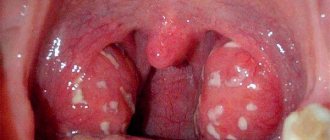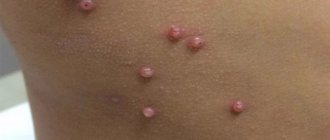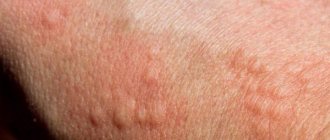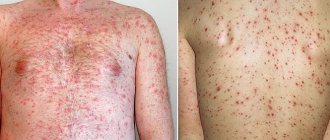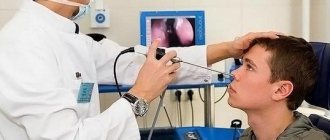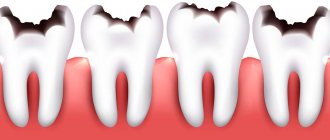Elena
Follicular tonsillitis is a purulent inflammation of the follicles of the tonsils, which has a high degree of infectivity and is transmitted to others during the first 2-3 days. In children, follicular tonsillitis causes serious consequences, so it is important for the child’s parents to follow the treatment prescribed by the doctor, as well as ensure proper rehabilitation.
The causative agent of the disease and modes of transmission
The causative agents of sore throat are microbes: staphylococci (80%), streptococci (10%) and a combination of two species (10%). These microorganisms constantly live in the child’s body, but at certain moments they become more aggressive. This is facilitated by hypothermia and contact with an infected person against a background of weakened immunity.
Methods of transmission of the disease:
- airborne;
- contact and household;
- fecal-oral;
- endogenous.
Thus, tonsillitis is transmitted by coughing, sneezing and poor personal hygiene.
The source of infection can be:
- toys;
- dishes;
- shared towel;
- other household items.
Less commonly, follicular tonsillitis occurs due to long-term caries or gum disease.
Causes and ways of contracting tonsillitis
For treatment, you need to know what causes follicular tonsillitis to develop. Bacteria enter the body from the environment, or as a result of the degeneration of their opportunistic flora, the tonsils become infected.
Main reasons:
- viruses (pneumonia, herpes simplex, measles, scarlet fever, Epstein-Barr, cytomegalovirus);
- microorganisms (fungi, mycoplasma);
- penetration of staphylococci and streptococci into the tonsils;
- development of microbes against the background of low air temperature;
- low immune defense of the body;
- general hypothermia, etc.
Causes of follicular sore throat
Forms of the disease
Doctor Komarovsky talks about sore throat
Follicular tonsillitis is a form of inflammation that affects the tonsils and mucous membrane of the throat. Other types include:
- Catarrhal sore throat. Sore throat is accompanied by a slight increase in temperature, weakness and lethargy, slight inflammation of the lymph nodes
- Lacunar tonsillitis. The symptoms are similar to follicular, but pus accumulates in the lacunae (recesses) of the tonsils.
- Fungal sore throat. Caused by yeast-like fungi. The course is similar to lacunar tonsillitis with the formation of a whitish coating on the tonsils.
- Diphtheria sore throat. It develops as a result of diphtheria bacillus entering the body and poses the greatest danger. Accompanied by attacks of suffocation.
Distinctive signs of the disease
Upon examination, this form of acute tonsillitis is sometimes confused with lacunar tonsillitis. However, in addition to external similarity, follicular tonsillitis has symptoms unique to it:
- Feeling of thirst associated with dry mouth. This is followed by a sore throat and cough;
- The tonsils become enlarged and their arches turn red. The sore throat gets worse. When swallowing, it echoes the same sensation in the ear;
- The temperature rises, which is difficult to bring down. It also gives symptoms such as aching joints, headache;
- The patient feels weakness and chills;
- Intoxication occurs, disrupting the functioning of internal organs. Its effect on the cardiovascular system is dangerous;
- Lymph nodes swell. Touching them causes pain. Associated with this are symptoms of increased salivation and loss of appetite;
- Purulent growths appear on the tonsils - follicles. No larger than a millet grain, they are clearly visible upon inspection. They look like dirty yellow bumps, the contents are pus. Therefore, “purulent” is also added to the name of the disease;
- Digestive disorders occur. In adults, symptoms manifest themselves in the form of constipation; in children, vomiting and diarrhea occur;
- Blood counts change during the disease: the erythrocyte sedimentation rate and the number of leukocytes increase.
Some symptoms of follicular tonsillitis are similar to those of infectious mononucleosis. In this case, confusion of diagnoses can be dangerous for the patient; antibiotics indicated for sore throat are prohibited in the treatment of the second disease.
Incubation period and course of follicular tonsillitis in children
The incubation period of the disease varies from several hours to several days. The prodromal period (the onset of clinical manifestations) lasts about 3 days. The acute phase of the disease with a typical uncomplicated course lasts 7-8 days, after which the child recovers. If the disease becomes complicated or the child’s treatment is started late, the acute phase may last for 10 or more days.
You can learn about the peculiarities of the course of the disease in the video from the Health-Saving Channel.
First signs
The first signs of follicular tonsillitis in children are as follows:
- the disease is characterized by an acute onset with a sharp increase in body temperature (sometimes up to 40 degrees);
- The baby’s appetite noticeably decreases or disappears;
- depending on the age, the child becomes lethargic, is capricious, and cries;
- the anterior cervical lymph nodes enlarge and often cause pain;
- the tonsils swell, turn red, and a plaque forms on them, which the parents themselves can notice;
- a sore throat appears.
Subsequent development of the disease
The tonsils noticeably increase in size, ulcers appear on their surface, which burst after 2-3 days. The purulent mass spreads to nearby areas. The sore throat becomes noticeably worse. Sleep disturbance occurs - insomnia, anxiety. The headache may radiate to the ear. With severe intoxication of the body, abdominal syndrome (abdominal pain), diarrhea or constipation, and cramps occur.
Symptoms of intoxication
With follicular angina, the following symptoms of intoxication are present:
- chills;
- increased sweating;
- headache, dizziness;
- pain and aches in muscles and joints;
- tachycardia.
The disease is accompanied by severe malaise and a feeling of weakness.
Signs of illness when examining the pharynx
On swollen tonsils, under the follicular cover, yellow ulcers the size of a pinhead are visible. When examining the throat, you may observe light yellow or whitish-yellow dots (follicles) on the reddened tissue of the tonsils.
Features of the course in infants
In children, enlarged tonsils can cause asthma attacks. Vomiting and excessive salivation are often present. The follicles merge and burst, leading to abscesses. The newborn's tonsils become very swollen. The baby constantly cries, screams and may refuse to breastfeed.
At the slightest suspicion of a sore throat, parents of infants should seek urgent medical help.
Follicular tonsillitis - symptoms, clinical picture
A harbinger of any form of sore throat, including follicular one, is inflammation, redness and swelling of the mucous membrane of the throat, soft palate, palatine arches, and tonsils. Initially, there is no severe pain or high temperature. Therefore, the first signs are often mistaken for the development of an acute respiratory disease. When the main symptoms are added, it becomes clear that we are talking about acute tonsillitis, and not acute respiratory infections. And the symptoms look like this:
- the formation of purulent follicles on the tonsils, which are clearly visible through the mucous membrane,
- severe pain radiating to the ear when swallowing saliva, water, food,
- increase in body temperature to low-grade or high levels (39-40°),
- enlargement and tenderness of the submandibular lymph nodes,
- fever, chills, joint aches, muscle pain, headaches,
- against the background of dryness and soreness in the throat, a dry hacking cough may appear,
- signs of intoxication of the body, general weakness, lethargy,
- dyspepsia – nausea, vomiting, stool disorders,
- heart pain, tachycardia, arrhythmia,
- hoarseness or complete loss of voice,
- In young children, convulsions, loss of consciousness,
- severe sweating, insomnia.
The natural purpose of the tonsils is to absorb foreign microorganisms
Upon careful examination of the pharynx, the doctor will see hyperemic tissues of the throat, especially the tonsils and palatine arches. A purulent whitish-yellow coating is visible to the naked eye. This is a characteristic symptom for making a diagnosis. Additionally, a clinical blood test and a smear are performed to determine the pathogen.
The symptoms of follicular tonsillitis in adults are very clear and characteristic. But in some cases they can be confused with a very dangerous disease - diphtheria. It occurs with similar symptoms, but the treatment is completely different. Therefore, differential medical diagnosis in the case of tonsillitis, especially in children, is mandatory.
Recently, cases of non-temperature tonsillitis have been increasingly recorded. This indicates a violation of the body's thermoregulation. Follicular tonsillitis without fever occurs for several reasons:
- for autoimmune diseases,
- metabolic disorders,
- hormonal imbalance,
- low immunity,
- long-term use of antibiotics,
- alcohol abuse,
- taking vasodilator drugs,
- chronic tonsillitis.
Self-diagnosis based on the listed characteristic symptoms is not difficult. But you have to be careful because you can make a wrong diagnosis. Therefore, you need to see a doctor in any case. Only he can make the correct diagnosis and knows how to treat follicular tonsillitis.
Possible complications
With follicular angina, the child’s health status usually returns to normal 7-8 days after the onset of the disease (of course, provided that treatment was started on time).
However, if proper therapy is not available, the disease can cause various complications, such as:
- Streptococcal meningitis.
- Joint diseases.
- Sepsis (when purulent contents enter the blood, causing it to become infected).
- General persistent infection of the body (infectious shock).
- Meniere's syndrome (inflammation of the inner ear).
Follicular tonsillitis - treatment with folk remedies
In most cases, it is considered quite possible to cure follicular sore throat at home, but before starting treatment, we still recommend that you undergo an examination and consult a doctor, since bacterial infection requires antibiotics.
Along with the medications prescribed by a specialist, it is allowed to use traditional methods of treatment:
- Gargling and lubricating the throat. For follicular sore throat, you can gargle with antiseptics such as Chlorophyllipt, Miramistin or Furacilin, as well as a simple saline solution. For sore throat, a decoction of herbs (chamomile, calendula, sage), apple cider vinegar, and beet juice helps. To lubricate the throat, use Lugol's solution, propolis oil, and aloe juice. Such procedures help to disinfect the tonsils, cleanse them of pus and germs.
- Steam inhalations. They are carried out if there are complaints of a runny nose or cough. For tonsillitis, it is useful to breathe steam from herbal decoctions. You can also add a few drops of essential oil of fir, pine, and mint to the water.
- Warm compress on the throat. Make it with alcohol (dilute with water 2 times) or vodka. You need to keep the bandage on for about 2 hours. A warm compress helps relieve inflammation and pain, but before using it you need to be aware of the contraindications. For example, it is strictly contraindicated to make a compress at elevated temperatures.
Treating follicular tonsillitis at home is dangerous if the disease causes a severe deterioration in the person’s condition (for example, the temperature rises to 40° or severe swelling of the tonsils and throat closure occurs).
Diagnosis of the disease
The primary diagnosis of tonsillitis is a physical examination of the child. Due to the distinctive signs of follicular tonsillitis, the attending physician will be able to make a diagnosis after examining the tonsils. In cases where it is necessary to accurately identify the pathogen, additional diagnostic methods are used.
These include:
- taking a smear from the surface of the tonsils;
- clinical blood and urine analysis;
- serological studies;
- pharyngoscopy.
Tests for follicular angina will show an increase in ESR, as well as an increase in segmented and band leukocytes.
Differential diagnosis
The clinical manifestations of follicular tonsillitis are similar to diphtheria and infectious mononucleosis. Therefore, it is important to carry out a differential diagnosis of these diseases before starting treatment. Their main difference is that diphtheria affects the kidneys, as well as the heart and nervous system. Mononucleosis affects the lymph nodes and spreads to the liver and spleen. Treatment for these diseases is radically different.
Differential diagnosis of follicular tonsillitis
Symptoms
The distinctive features of follicular tonsillitis are the particular severity of the disease.
- temperature from 38.5 to 40 degrees, lasts quite a long time, difficult to bring down;
- pain when swallowing, radiating to the ear;
- redness of the tonsils;
- enlarged lymph nodes;
- prostration;
- joint pain, back pain, headache;
- intoxication (against this background, stomach upsets and loss of appetite are possible);
- formation of purulent follicles;
- swelling in the neck on the left or right side.
Children under 3 years of age develop symptoms of the disease that are unique to them: nausea and vomiting, dizziness and frequent loss of consciousness, as well as the appearance of signs of meningism.
However, the presence of all these signs of follicular tonsillitis does not exempt you from calling a doctor. Only an ENT specialist will make a correct and final diagnosis. This type of sore throat is easily confused with infectious mononucleosis. And if you choose the wrong treatment path, you can end up with serious complications.
The photo shows a throat with infectious mononucleosis
Exceptional cases are follicular tonsillitis without fever. The inflammatory process contributes to an increase in temperature in the body, albeit slightly, but still. Because of this, sore throat is confused with stomatitis. White blisters (papules) form on the throat. They are mistaken for purulent follicles. Stomatitis occurs in a mild form without fever.
Signs of follicular tonsillitis can be confused with herpetic tonsillitis. But since they are caused by different pathogens, the treatment should be different.
This is what follicular tonsillitis looks like
This is what herpetic sore throat looks like
The attending physician will take into account all the features and the general picture of the disease and prescribe treatment. Online consultations and obtaining information from other sources are not a substitute for an objective examination by an ENT specialist. The symptoms of follicular tonsillitis are pronounced, so diagnosis is quick.
Additional diagnostic methods are used:
- Taking a general clinical blood test. An increase in the level of leukocytes, a shift in the leukogram and an increase in the ESR level indicate the development of the disease.
- Submitting smears from the tonsils for bacteriological examination. Using this method, the type of disease can be identified.
- Pharyngoscopy.
- Taking a urine test. This method aims to identify the risk of side effects from the kidneys.
Diagnostics
If you experience swelling in your throat, pain, difficulty breathing, or a sharp rise in temperature, you should immediately contact an ENT specialist. He will examine the pharynx and larynx, conduct an interview and make a preliminary diagnosis.
In order to find out the type of pathogen, it will be necessary to perform additional diagnostic procedures. They include bacteriological culture, rapid testing for hemolytic streptococcus, PCR analysis, and other studies.
It is necessary to find out the type of pathogen in order to choose which antibiotics or antiviral agents to treat. In addition, it is necessary to establish the sensitivity of the infectious agent to the proposed therapy.
Causes of the disease
The causes of follicular tonsillitis are infection. This can happen through airborne droplets when you breathe air contaminated by a sick person. This is how viruses, such as adenovirus, rhinovirus or influenza, spread.
Bacteria are transmitted through direct contact. For example: you shook the hand of an infected person, and then, without washing it, touched your mouth or nose. You can also pick up a bacterial infection by swimming in a dirty pond. In most cases, sore throat is caused by group A beta-hemolytic streptococcus or other streptococci.
Interesting fact! When infected with follicular tonsillitis, the incubation period lasts 2-3 days.
Please note that the development of inflammation mainly occurs in people with weakened immune systems, because if you have reliable body protection, then the pathogenic microorganisms that enter will be eliminated and will not have time to provoke the disease. But when immunity decreases (and this happens with hypothermia, malnutrition, various systemic diseases), then the bacteria remain alive and cause various ailments.
It is because of weak immunity that follicular tonsillitis is often diagnosed during pregnancy and childhood.
Possible complications in the child
Untimely or incorrect therapy can cause complications, such as:
- rheumatism, arthritis;
- blood poisoning;
- glomerulonephritis;
- vasculitis;
- kidney and heart diseases.
Follicular tonsillitis is already a complication, because follicles filled with pus can break into the tonsil and cause a peritonsillar abscess. If 5 days have passed since the start of treatment and no improvement has occurred, this is fraught with more dangerous consequences: infectious shock, sepsis, streptococcal meningitis, Lemierre's syndrome.
To avoid complications, you must immediately consult a doctor when the first signs of the disease appear.
An experienced specialist will be able to adequately assess the situation, make the correct diagnosis and prescribe effective treatment.
Forecast
Having learned about the presence of follicular tonsillitis, many panic and begin to worry unnecessarily. Yes, the disease is dangerous and has its consequences, but timely intervention is necessary to prevent its development. And then the prognosis will be favorable.
At the first suspicion of follicular tonsillitis, you should consult a doctor who will begin antibiotic therapy and other treatment methods. And even if you need to remove your tonsils, this is better than getting complications - severe pathologies of the heart, kidneys and other organs.
Treatment methods
Treatment of follicular tonsillitis is a complex of measures based on antibiotic therapy. The disease in infants and children under one year of age must be treated in a hospital under the constant supervision of doctors. Older children, if the illness is not severe, can be treated at home.
The main standards for treating tonsillitis include the following methods:
- antibacterial and antihistamines;
- local antiseptics;
- symptomatic therapy;
- diet;
- compliance with strict bed rest.
In addition, in some cases, doctors refer children for surgery. In case of severe lymphadenitis, UHF therapy is performed.
Parents should know that failure to comply with bed rest during the period of fever contributes to damage to the child’s heart.
How to prevent dehydration
It is very important to drink enough fluids during illness. It is difficult for a child to swallow ordinary water due to a sore throat, but you can replace it with mineral water without gas. The alkali included in its composition acts as a local anesthetic and antiseptic. You can give babies herbal decoctions, but only after consulting with your doctor. Coltsfoot has proven itself well; rose hips and chamomile also have an anti-inflammatory effect.
Chamomile (RUB 70)
Operation
Follicular tonsillitis in children can become chronic and occur more than 7 times a year. In this case, the doctor refers the child for surgery. The procedure involves removing the tonsils and is called a tonsillectomy.
Additional indications for tonsillectomy:
- toxic-allergic symptoms of chronic follicular tonsillitis;
- hypertrophied palatine tonsils;
- purulent complications.
Reviews about this treatment method are conflicting, so parents must make a decision taking into account all the factors accompanying the child’s disease.
Drug treatment
Drug treatment of follicular sore throat at home includes taking antibiotics in combination with local and symptomatic treatment. Any means should be used only as prescribed by a doctor after appropriate examinations.
Drugs that are often used in pediatrics:
- Antibiotics: Ceftriaxone, Amoxiclav, Flemoxin. All of these medications can be used from birth, including on premature babies. The dose is selected individually.
- Antihistamines: Tavegil (from birth), Suprastin (from 3 years).
- Anti-inflammatory sprays: Tantum Verde (from 3 years), Oralcept (from 3 years).
After completing the course of antibiotics, it is advisable to use probiotics, for example, Linex (from birth) or Bifikol (from 6 months).
The dosage and methods of taking medications can be found in the table.
| Type of medication | A drug | Dosage | Method of administration |
| Antibiotic | Ceftriaxone Amoxiclav Flemoxin | 20-100 mg/kg/day 30 mg/kg/day 30-60 mg/kg/day | every 12 hours IV or IM every 8 hours IV tablets or suspension in 2-3 doses |
| Antihistamines | Tavegil Suprastin | 25 mg/kg/day 1/4-1/2 tablets | for 2 doses 2-3 times a day after meals |
| Anti-inflammatory | Tantum Verde Oralcept | 1 injection for every 4 kg of body weight, but no more than 4 injections - 3-6 years, 4 injections - 6-12 years | 2-6 days a week |
| Probiotics | Linex Bificol | up to 7 years - 1 sachet, over 7 years - 2 sachets 6-12 months - 3 doses, over 1 year - 5 doses | 1 daily during meals 1-3 daily 30-40 minutes before meals |
Treatment of follicular tonsillitis, drugs
The main method of treatment for follicular sore throat is antibiotics, which provide protection to the body by stopping microbial growth and reproduction. Drugs are prescribed in the form of tablets, suspensions, sprays and injections.
Treatment of follicular tonsillitis in both children and adults is always complex and includes the prescription of anti-inflammatory, antipyretic and antihistamine drugs, vitamin complexes and immunomodulators.
1) Antibiotic therapy includes antibiotics from the macrolide group, for example "Sumamed", a combination drug such as "Amoxiclava", a modern drug - "Augmentin".
2) To relieve symptoms of fever, reduce inflammatory reactions and pain symptoms in the pharynx, antipyretic drugs are prescribed - Panadol, Paracetamol or Nurofen.
3) Antihistamines such as Fenistil, Suprastin, Zyrtek or Zodaka relieve swelling in the throat and reduce the severity of the body's allergic response to antibiotics.
4) Removing inflammatory reactions in the pharynx, clearing plaque from lymphoid tissue, and destroying pathogens is achieved by prescribing local antiseptics - Miramistin, Chlorophyllipt and Furacilin.
5) As auxiliary means - the prevention of viral and colds, strengthening antibacterial treatment and strengthening immune functions, immunostimulant preparations - Interferon, Viferon, Immunal, Ribomunil or preparations with echinacea base are used.
6) To support immune functions, replenish the body with vitamins and minerals that protect the body from colds, various vitamin complexes “Polivit”, “Pikovit” are prescribed, for children – “Multi-Tabs” or “Alfovit”.
7) After taking antibiotics, it is advisable to prescribe probiotics to restore the intestinal flora - these can be the drugs “Linex”, “Bifiform”, or “Bifidumbacterin”.
Treatment
Typically, a patient suffering from follicular tonsillitis does not require hospitalization.
The exception is extremely severe cases when the child needs constant monitoring by a doctor.
However, a baby in whom the first manifestations of the disease are detected must be shown to a doctor, since only a doctor can determine the disease and prescribe adequate treatment.
Read about treatment options for childhood arthritis here.
Drug therapy
The child is prescribed a whole range of medications, including:
- antibiotics: penicillins (Flemoxin, Augmentin, Amoxiclav, etc.) and macrolides (Sumamed, Azitrox, Hemomycin, etc.);
- antibacterial drugs;
- antipyretics (Panadol, Nurofen);
- drugs to strengthen the immune system;
- antihistamines;
- vitamins;
- probiotics (Acipol, Bifidumbacterin);
- topical medications (sprays, inhalers, lozenges).
Traditional medicine
Traditional recipes are widely used as additional measures to treat follicular tonsillitis at home.
These recommendations cannot be used as a replacement for drug therapy, since a bacterial infection can only be cured with the help of medications (antibiotics, antibacterial drugs).
To relieve symptoms, the baby is recommended to drink herbal teas with the addition of lemon and honey, gargle with herbal decoctions, soda, and saline solution.
Treatment of the disease
The disease can be treated at home if you are confident in your abilities and do everything according to the doctor’s instructions. The following aspects should be taken into account during treatment:
- The only way to influence the bacteria is to treat the child with antibiotics. As usual, the doctor prescribes drugs: ceftriaxone, cephalexin, sumamed, erythromycin, azithromycin. All drugs have proven effectiveness and will help the child get back on his feet and avoid complications. Antibiotics should be taken as directed in the treatment regimen, even if the symptoms of the disease go away before the course ends. Otherwise, bacteria form a kind of immunity to the drug, and then this medicine will not be effective in such a situation.
- If symptoms of intoxication increase, it is imperative to increase the amount of fluid consumed by the child. It is acceptable to use the drugs Oralit and Rehydron - they restore water and electrolyte balance well. It is permissible to use compotes, fruit drinks, juices.
- In parallel with antibiotics, doctors usually prescribe drugs to restore beneficial intestinal microflora (symbiter, enterozermina) and antiallergic drugs (claritin, tavegil).
- When treating follicular tonsillitis in children, gargling is mandatory. For this, various solutions are used with soda, salt and iodine, with tea tree essential oil, and with chlorophyllipt. In addition, the affected areas of the tonsils should be treated with antiseptic solutions - Miramistin, Lugol. If these methods do not suit you, it is permissible to irrigate the tonsils with special solutions - orasept, faringo-spray, eucalyptus.
- Be sure to ensure peace and rest. Food should be high in calories, pureed and soft, so as not to injure a sore throat, but to replenish the body’s energy reserves, which are used to fight infection.
- If the temperature rises above 38.5, it must be brought down; the nervous system in children is not able to cope with hyperthermia.
Photo gallery
In the photo below you can see the cost of some drugs.
Linex sachet (RUB 710)
Tavegil (233 rub.)
Ceftriaxone (25 rub.)
Tantum Verde (273 RUR)
Local treatment
As local therapy, rinsing with special solutions - Chlorhexidine or Furacillin - is used. The child must understand that the medicine should not be swallowed, and that any remaining medication must be spat out. This method is not suitable for infants. Solutions can be bought ready-made or prepared independently from Furacillin - 1 tablet is diluted in 200 grams of water. You can rinse up to 6 times a day for 5-7 days.
Antibiotics
Antibiotics are used to treat follicular tonsillitis:
- cephalosporin series;
- macrolide groups;
- penicillins;
- ampicillins.
Treatment lasts 5-10 days and should not be interrupted when improvements occur. Streptococci can develop their own immunity to antibacterial drugs, and strong agents may be needed to destroy them. Antibiotics are prescribed intramuscularly or orally, less often intravenously. Children are given syrups, older children - tablets.
Symptomatic treatment
To treat the main symptom of follicular tonsillitis - temperature, antipyretics are used. Children from birth are prescribed Paracetamol or Nurofen in the form of syrup, which can be replaced with tablets or injections. Paracetamol is used in a dosage of 15 mg/kg/day. Nurofen 50 ml 3 times a day. It often happens that the therapeutic effect of antipyretic drugs does not occur; in this case, the doctor may prescribe injections of Analgin with Diphenhydramine.
Nurofen for children (270 RUR)
If a child has a stuffy nose, you need to rinse it with solutions of ocean water:
- Aqua Maris;
- Zilch;
- Aqualor.
They can be used from birth; children are prescribed in the form of drops; older children (from 2 years old) can be used in the form of a spray. If it is necessary to eliminate swelling in the nose, Nazivin (from birth) 0.025-0.5% or Otrivin (from 3 years) is prescribed in a convenient form.
Folk remedies
You can treat a sore throat in a 2-3 year old child at home using folk recipes. The remedies described cannot cure tonsillitis on their own, but are an excellent help for parents. This type of treatment should be used after the approval of the pediatrician and strictly under his supervision.
The most effective methods that can be used at home:
- Gargling with a solution of salt and soda. Dissolve 1 tsp in warm boiled water. components. Apply 2-3 times a day. It is important to ensure that the solution is not hot. If a child cannot rinse his mouth on his own, this type of therapy cannot be used.
- Teas with anti-inflammatory effect: 1 tbsp. l. Chamomile flowers are poured into 1 liter of boiling water and infused under the lid for 15-20 minutes. The broth is filtered and diluted with warm boiled water. Then you should add honey at the rate of 1 tsp. for 200-250 ml of tea. You can take this drink 2-3 times a day.
- Mumiyo. The tablet dissolves in warm boiled water (until dark brown), the solution is used for rinsing. In this case, it is important not to make sudden movements so as not to injure the swollen tonsils.
Boosting immunity with green tea, rose hips or raspberry infusion will be an excellent help for the body of a sick child. The drink is taken warm and not strong.
In this video, a children's doctor talks about the treatment of sore throat in children, the video was provided by the Belarus1 channel.
How to treat follicular tonsillitis?
Treatment of follicular tonsillitis involves taking antibiotics, which help stop inflammation and speed up the healing process. But it is important to remember that you cannot prescribe medications yourself to prevent the consequences. The attending physician, depending on the patient’s age, stage of the disease and other factors, selects one or another drug in the required dosage.
You should know that antibiotics are taken for the full course, regardless of the course of the sore throat. In combination, it is necessary to use drugs to restore intestinal microflora (Linex, Bifidumbacterin).
To reduce pain and relieve inflammation, painkillers and anti-inflammatory drugs are used, often in the form of sprays and lozenges. Their action is aimed at facilitating swallowing and eliminating irritation in the throat. The most common are Kameton, Hexoral, Strepsils, Doctor Mom, Ingalipt, Tantum Verde, etc.
For a faster recovery, it is important to regularly gargle with special antiseptics (Lugol, Dolphin, Miramistin, Iodinol), a solution of Furacilin, salt and soda, or decoctions of medicinal herbs.
Physiotherapy is quite effective in combination with the main treatment. Special devices with infrared rays allow you to warm up the affected tissues, as a result of which the blood vessels dilate and regeneration processes are activated. To improve tissue permeability and kill bacteria, it can be combined with medicinal inhalations.
If allergic reactions occur against the background of follicular tonsillitis, antihistamines are prescribed. And for the general strengthening of the system and strengthening the protective function of the body, it is important to include general strengthening treatment in the form of a course of vitamins and beneficial microelements.
Causes of the disease
Follicular tonsillitis (acute tonsillitis) is a purulent infectious inflammation of the lymph nodes (follicles) located on the tonsils of the pharynx, occurring in an acute form.
Tonsils are located in the oral cavity and nasopharynx, participate in the formation of immunity and are the first barrier to infection seeking to enter the body.
This type of sore throat primarily affects children of preschool and school age. In adults over 40 years of age, due to certain physiological characteristics, this disease practically does not occur.
Sore throat is a seasonal disease, most often observed in the autumn-winter period. This is explained by the cold season, lack of vitamins, and the prevalence of various infections.
The causative agents of follicular sore throat can most often be hemolytic streptococci, much less often - staphylococci, pneumococci and adenoviruses.
The main causes of acute tonsillitis in childhood should be considered:
- local or general hypothermia of the body (swimming in ponds, eating ice cream, etc.);
- direct or indirect contact with a patient or bacteria carrier.
In medical practice, there are 2 main ways of spreading infection:
- airborne;
- nutritional.
Often parents who are bacteria carriers, without knowing it, transmit pathogenic microorganisms to their child through close contact.
However, it will be difficult for the infection to overcome the baby’s body, which has good immunity. Factors contributing to a decrease in the protective apparatus are:
- mental or physical fatigue;
- poor nutrition;
- stressful situations;
- seasonal vitamin deficiency;
- infections developing in the child’s body: scarlet fever, influenza, ARVI;
- some chronic diseases: tuberculosis, diabetes, allergies, etc.;
- surgical manipulations in the nasopharynx area.
With any failure in the child’s immune system, its own foci of infection located next to the tonsils can become active: sinuses, carious teeth, parts of the ear.
It should be noted that a child who has once suffered acute tonsillitis can remain a source of infection for others for a long time.
Follicular tonsillitis - features, causes
Follicular purulent tonsillitis is an acute bacterial disease of the tonsils. Appears as an exacerbation of a chronic purulent process in the throat or aggravation of the inflammatory process in the nasopharynx. A characteristic and most important sign is white plugs in the follicles of the tonsils. Therefore, this is primarily a pathological purulent process in the tissues of the throat.
The natural purpose of the tonsils is to absorb foreign microorganisms that enter the oral cavity. When functioning normally, they protect the body from the proliferation of microbes. But against the background of reduced immunity, they cease to perform their protective function. This is how a purulent process develops in the tonsils, which can spread throughout the body. If the pathology affects the lacunae of the tonsils, lacunar tonsillitis develops, and if uncontrolled proliferation of pathogenic microflora occurs in the follicles, the tonsillitis takes on the form of a follicular one.
Follicular tonsillitis is one of the most common types
The causative agents of follicular sore throat in most cases are betagemolytic streptococci, less often - staphylococci, Candida fungi, viruses, enteroviruses. Finding themselves on favorable soil, they carry out a massive attack on the lymphoid tissue of the throat and rapidly multiply. Such soil can be weak immunity, vitamin deficiency, or a previous cold.
There are two methods of infection - internal (endogenous) and external (exogenous). The first way implies the constant presence in the human body of the causative agent of sore throat, which, when reactivity decreases, causes illness. The exogenous method involves the arrival of the pathogen from the outside.
Follicular tonsillitis is transmitted in adults and children in three main ways:
- airborne - through inhalation of microbes when talking, coughing, sneezing,
- fecal-oral – when consuming contaminated water, food,
- contact - as a result of using common household objects, kissing, shaking hands, hugging.
Children who spend a long time in a school or kindergarten group are most susceptible to sore throat. Adults can become infected at the workplace, in public catering establishments, in transport, or from their sick child. Seasonality has a particular influence on the spread of tonsillitis: in autumn and spring the number of cases increases sharply. A person’s individual predisposition also plays an important role.
Favorable factors for follicular tonsillitis are:
- severe hypothermia, cold food and water,
- low vitamin content,
- poor unbalanced diet,
- great physical activity,
- constant stress, depression, overwork,
- chronic foci of infection in the respiratory tract,
- infectious diseases suffered on the legs and untreated,
- constant contact with the bacteria carrier.
Prevention
Hardening the body is the best way to avoid any type of sore throat. In addition, it is necessary to combat chronic infectious pathologies. Avoid smoking and play sports.
If the patient already has chronic tonsillitis, it is recommended to rinse the tonsils at least once every six months using a special device. This will prevent further development of purulent sore throat.
It is necessary to observe hygiene rules for the mouth and hands. Avoid any contact with a sick person, use individual dishes, towels, and hygiene items.
Causes
Streptococci, staphylococci and pneumococci under certain conditions begin to actively multiply, causing an inflammatory process in the pharynx. More often this happens during a sharp transition from heat to cold, when the body does not have time to readjust. Sore throat in general and follicular in particular are of a bacterial nature. It is enough to communicate with a patient at close range and not have time to dodge his cough or sneeze to get an infection. It can be transmitted through dishes, towels, and books. Therefore, there is no need to doubt whether follicular tonsillitis is contagious. Although the body’s predisposition to the bacteria that causes it also plays a role.
Rehabilitation and child care
During treatment of the disease, the child must be provided with proper care and living conditions. In the children's room it is necessary to maintain a humidity of 50-60% and an air temperature of 19-20 degrees. These two conditions will significantly influence the timing of the disease. During the heating season, you can install humidifiers, as well as hygrometers and thermometers.
It is important to stick to your diet during treatment.
Need to exclude:
- spicy;
- roast;
- salty;
- spices.
It is recommended to add fruits and vegetables to the child’s menu, as well as freshly squeezed juices and/or vitamin complexes, which should be selected by the attending physician. It is advisable to grind the food in a blender and do not forget to rinse your mouth after eating. It is necessary to monitor your health, avoid hypothermia, and do not consume cold drinks or foods. Physical activity should be limited for 3-4 weeks after illness, but it is not necessary to completely remove it.
Possible complications and consequences
During the disease, complications may begin that occur on days 3-6 of treatment.
They are associated with the spread of inflammation to:
- nearby organs - ear, nose;
- tissue - abscess, peritonsillitis, purulent lesion of lymphoid tissue.
Complications after a sore throat occur rarely, 3-4 weeks after recovery.
The most common include:
- meningitis;
- Lenier's syndrome;
- sepsis;
- infectious shock;
- arthritis;
- rheumatism;
- glomerulonephritis.
Complications of follicular tonsillitis
In cases where therapy was started at a relatively late date, local complications arise: peritonsillitis, peritonsillar abscess, otitis media and others. As the inflammatory process spreads and purulent foci form, the general condition deteriorates and the following symptoms develop:
- high fever;
- the predominance of unilateral pain in the throat, sharply intensifying when swallowing;
- increased salivation;
- lockjaw;
- pain when opening the mouth;
- unilateral swelling.
Pharyngoscopy reveals hyperemia of the soft palate, swelling of the palatine arch on the affected side, asymmetry of the uvula, and a shift to the center of the affected tonsil.
One of the dangers of follicular tonsillitis is a high risk of complications, in particular glomerulonephritis.
Sore throat develops as an allergic-hyperergic reaction, which is a prerequisite for complications that are infectious and allergic in nature and are associated with the hemolytic streptococcus antigen:
- rheumatism;
- acute diffuse arthritis;
- infectious-allergic myocarditis;
- polyarthritis;
- cholecystocholangitis;
- glomerulonephritis.
Heart pathology can be diagnosed by persistent signs on the electrocardiogram, for example, with focal myocardial damage. A moderate increase in lactate dehydrogenase is detected in the blood.
Signs of glomerulonephritis are moderate proteinuria, leukocyturia, erythrocyturia and cylindruria.
The main place in the prevention of follicular tonsillitis is the treatment of chronic diseases of the ENT organs and teeth. It is important to monitor the child’s diet so that his body receives a sufficient amount of vitamins and microelements. The room where the baby lives should not be damp or dry.
Additional disease prevention measures include:
- timely and complete treatment of acute respiratory infections and acute respiratory viral infections;
- moderate physical activity;
- reducing the number of stressful situations;
- avoiding local and general hypothermia;
- proper organization of sleep and daytime rest.
If there are several children in the family, the sick child should be given separate dishes and other items for daily use.
The main symptoms of follicular tonsillitis
Follicular tonsillitis almost always has an acute onset: the temperature rises sharply to 38-40 degrees (if there is no temperature, this means that the patient has a catarrhal form of the disease), there is an increase in the submandibular lymph nodes, the palatine tonsils are also enlarged and painful.
The condition of follicular tonsillitis is extremely sluggish and broken. Patients experience fatigue, lack of concentration, severe headache, as well as heart pain, rapid pulse, and shortness of breath. A sick person has difficulty even getting out of bed and raising his head. In children, symptoms of follicular tonsillitis may include lack of appetite, loose stools, and vomiting.
On the inflamed tonsils of a patient with this form of tonsillitis, pale yellow suppuration of the follicles is also present, and that is why the disease is called “follicular tonsillitis”. If treatment for follicular tonsillitis is not started in time, then fusion of foci of suppuration may subsequently occur.
The temperature with a sore throat lasts about a week, until the inflammatory process subsides. Most often, children and adults from 35 to 40 years of age are affected by this disease, and subject to correct and timely treatment, which can only be prescribed by the attending physician, follicular tonsillitis ends with complete recovery of the patient in 7-10 days.
This photo of a follicular sore throat clearly demonstrates what kind of purulent plaque can form on the tonsils.



